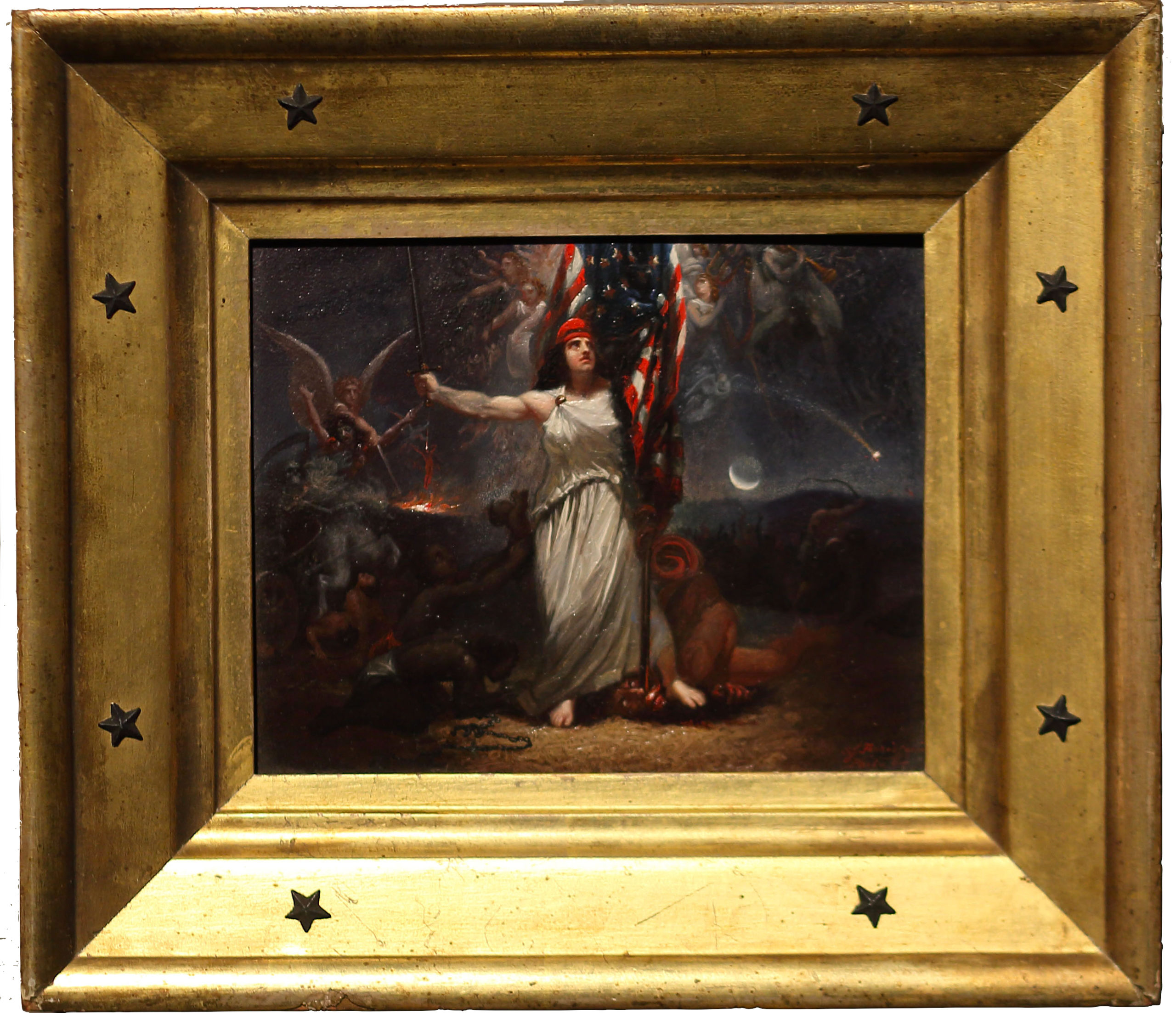The Triumph of Liberty ( 1864 )
Oil on canvas
7.75 x 9 inches sight size
Original frame – S.J. Ferris fecit/ Phila 64′
Provenance, Private Collection USA
Stephen James Ferris’s elaborate and deeply allegorical The Triumph of Liberty is a quintessential example of the power of symbolic representation in the visual arts. Filled with traditional imagery of the American Republic, anti-slavery movement, and Biblical prophecy, it is Ferris’s multiple employment of these symbols in a single canvas that makes this masterwork so distinctive. Executed in a highly expressive style, the artist depicts fire, darkness, celestial events, and supernatural beings to create a compelling commentary on the internal American conflict.
Biography of Stephen James Ferris ( 1835-1915, American )
A portrait painter and etcher, Stephen Ferris studied at the Pennsylvania Academy, with Samuel Waugh for two years in Bordentown, New Jersey and in Europe. He became a teacher at the Philadelphia School of Design for women for 26 years, and was an engraver for various publishers.
His son, Jean Leon Gerome Ferris, and daughter, May Electa Ferris, were also artists. His wife, Elizabeth Moran Ferris was the sister of artists Edward and Thomas Moran.
Ferris painted more than 2000 portraits and became a proficient etcher, having seen with Thomas Moran a demonstration of this skill in 1866 by John Sartain, the veteran engraver and mezzotinter. However, it was Joseph Pennell who started Ferris on his career as an etcher.
In 1875, Ferris collaborated with Peter Moran and produced the etching The Chariot Race in the Circus Maximus, which was heralded as “the most important etching yet produced in America.” He frequently demonstrated etching techniques, often at the Philadelphia Sketch Club of which he was a member.
He exhibited at the Pennsylvania Academy, the Boston Art Club and in the Painters and Etchers exhibit at the National Academy of Design.
He was born in Plattsburg, New York and arrived in Philadelphia at the age of twenty one, after spending the previous years in Illinois.
Source:
David Sellin, Thomas Eakins and His Fellow Artists at the Philadelphia Sketch Club
Peter Hastings Falk, Editor, Who Was Who in American Art
View All Works

